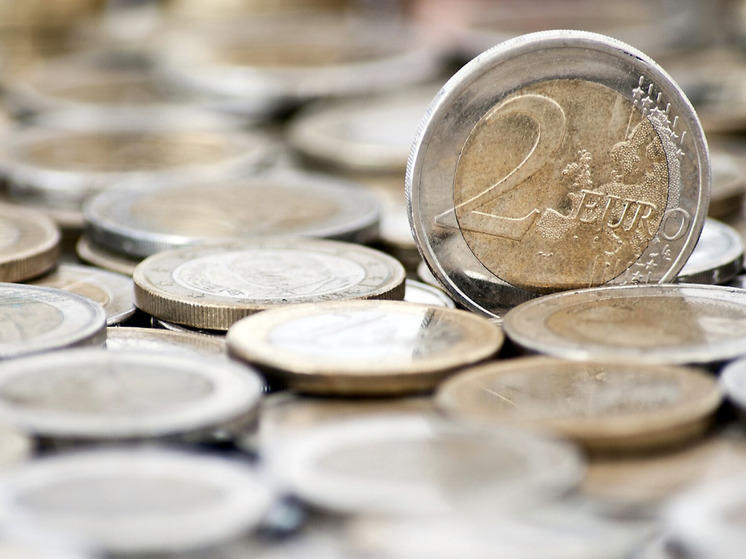Analyst Antonov spoke about the “pain point” for the exchange rate for the Central Bank and the Ministry of Finance
In recent days, the Ministry of Economic Development's forecast for the ruble has caused a stir, according to which it will strengthen to 94 per dollar by the end of this year. 90-92 — by the middle of next year, and at the peak of strengthening in July 2024 it will even reach 87.5 rubles. However, the ruble ended September on the stock exchange not with strengthening, but with another weakening – to almost 98 per dollar. What will happen to the exchange rate of our national currency next — in October? MK talked about this with specialists — BitRiver financial analyst Vladislav Antonov and Freedom Finance Global leading analyst Natalya Milchakova.
 Photo: freepik
Photo: freepik
: When making a forecast, the Ministry of Economic Development relies on its macrodata and mathematical models. There are many different models, all of them produce different results because the input parameters are different. In the current environment with high geopolitical risks and complete uncertainty due to sanctions, it makes no sense to make medium-term forecasts. There are many events happening every day that affect the stock exchanges. The dynamics of the ruble may be influenced by: the Central Bank of Russia, the Ministry of Finance of the Russian Federation, oil prices, decisions of the OPEC+ alliance, dollar dynamics in the global market, verbal interventions by government officials, the tax period, demand for imports, as well as inflation data and sanctions.
: A decrease in the exchange rate to 94 rubles per dollar is quite likely. It's not that big of a move. The market can show fluctuations of 1-2 rubles within one day. The further the value is from zero, the higher the volatility.
But I do not yet see the conditions for a trend reversal. The share of transactions in national currencies is increasing, which means the supply of dollars and euros on the market is decreasing. While the demand for currency from importers remains.
: In our opinion, for the ruble, first of all, the dynamics of oil prices and macroeconomic indicators of Russia, including the dynamics of the trade balance and budget revenues, are important. Since these indicators are improving, and perhaps in September the state budget of the Russian Federation will also be in surplus, as in August, it means that there is a possibility that the ruble will strengthen.
In addition, the dollar is above 90 rubles. and euros above 100 rubles. look very overbought. At the end of October, the Board of Directors of the Bank of Russia will announce the next decision on the key rate. If the dollar rises again to about 100 rubles, then the key rate may be raised again, most likely from 13% to 14%, which in the short term may affect the strengthening of the ruble. And no one canceled the tax period at the end of the month. So there are factors for a possible strengthening of the ruble.
: We do not know at what level in the dollar and euro the “pain point” is for the Central Bank and the Ministry of Finance. In fact, a weak ruble and high oil prices are only to the advantage of the Ministry of Finance, since they do not allow the budget deficit to grow with large expenses. The Central Bank controls inflation and does not set exchange rates on the market. He only cares about inflation and fights against it by raising rates.
The Central Bank advocates market mechanisms for setting exchange rates and does not want to introduce commissions for the purchase of currency and limit the withdrawal of capital.
: Despite the fact that budget revenue indicators will work in favor of strengthening the ruble, some other indicators, for example, the inflation rate, may, on the contrary, become a factor in its weakening. Data on accelerating inflation growth in September (they will be released only in the first ten days of October) may weaken the ruble in the short term. In addition, the ruble weakened in September most often due to an increase in the volume of currency purchases into the National Welfare Fund (NWF), and strengthened during the period of currency purchases by the Central Bank of the Russian Federation. This trend, if it continues into October, may not strengthen, but rather weaken the ruble. The withdrawal of foreign investors from Russian assets also generates demand for foreign currency. Finally, the geopolitical situation also remains difficult. All these are factors working against the ruble.
: I do not see any prerequisites for the ruble to strengthen by 9-10 rubles in 9 months, as indicated in the Ministry of Energy forecast. I am inclined to believe that during this period we will observe dollar fluctuations in the range of 92.5 – 101 rubles.
: Based on the factors listed above — both positive and negative, we believe that by the end of October the dollar will fluctuate in the range of 94-98 rubles, the euro in the range of 102-106 rubles. By the end of 2023, we expect the dollar to be at 93-97 rubles, the euro in the range of 101-105 rubles.


